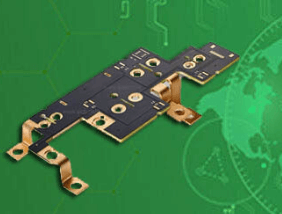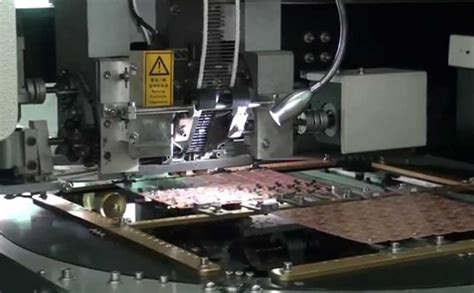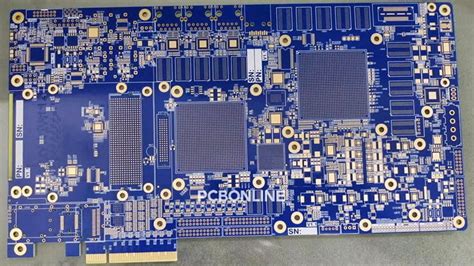Pcb thermal pad soldering
Importance Of Pcb thermal pad soldering
In the realm of printed circuit board (PCB) design, thermal management is a critical aspect that significantly influences the performance and reliability of electronic devices.
One of the most effective methods to enhance thermal dissipation in PCBs is the incorporation of thermal pad vias.
These vias, which are essentially small holes filled with conductive material, play a pivotal role in transferring heat away from critical components, thereby ensuring optimal functionality and longevity.
Thermal pad vias are strategically placed beneath heat-generating components, such as integrated circuits (ICs) and power transistors, to facilitate efficient heat transfer from the component to the PCB’s thermal plane. This process is crucial because excessive heat can lead to component failure, reduced efficiency, and even catastrophic damage to the entire electronic system. By providing a direct thermal path, these vias help in maintaining the temperature within safe operating limits, thus enhancing the overall reliability of the device.
Moreover, the effectiveness of thermal pad vias is not solely dependent on their presence but also on their design and placement.
The size, number, and distribution of these vias must be meticulously calculated to ensure optimal thermal performance. For instance, larger vias can transfer more heat but may compromise the structural integrity of the PCB if not properly managed. Conversely, smaller vias may not provide sufficient thermal relief. Therefore, a balanced approach, often involving thermal simulations and empirical testing, is essential to determine the most effective configuration.
In addition to their thermal management capabilities, thermal pad vias also contribute to the electrical performance of the PCB.
By providing a low-impedance path for heat dissipation, they help in reducing thermal-induced electrical noise and signal degradation. This is particularly important in high-frequency applications where even minor thermal variations can significantly impact signal integrity. Consequently, the integration of thermal pad vias can lead to improved electrical performance and enhanced signal quality.
Furthermore, the material used for filling these vias is another critical factor that influences their effectiveness.
Typically, materials with high thermal conductivity, such as copper, are preferred to maximize heat transfer. However, the choice of material must also consider other factors such as cost, manufacturability, and compatibility with the overall PCB design. Advanced techniques, such as via-in-pad plating and microvia technology, have further expanded the possibilities for optimizing thermal pad vias, enabling designers to achieve superior thermal management without compromising on other design aspects.
The importance of thermal pad vias extends beyond individual component protection to the overall system reliability.
In complex electronic systems, where multiple components generate significant heat, effective thermal management becomes even more critical. By efficiently dissipating heat, thermal pad vias help in preventing thermal hotspots, ensuring uniform temperature distribution across the PCB. This not only enhances the performance of individual components but also contributes to the stability and reliability of the entire system.
In conclusion, thermal pad vias are indispensable elements in modern PCB design, offering a robust solution for thermal management. Their strategic implementation can significantly enhance the thermal and electrical performance of electronic devices, ensuring reliability and longevity. As electronic systems continue to evolve, the role of thermal pad vias in maintaining optimal operating conditions will undoubtedly become even more crucial, underscoring their importance in the ever-advancing field of PCB design.

Best Practices For Implementing Thermal Pad Vias
Implementing thermal pad vias in printed circuit boards (PCBs) is a critical practice for managing heat dissipation in electronic devices. As electronic components become increasingly powerful and compact, the need for efficient thermal management solutions has never been more pressing. Thermal pad vias, which are small holes filled with conductive material, play a pivotal role in transferring heat away from sensitive components to prevent overheating and ensure optimal performance. To achieve the best results, several best practices should be followed when incorporating thermal pad vias into PCB designs.
First and foremost, the placement of thermal pad vias is crucial.
They should be strategically positioned under the heat-generating components, such as integrated circuits (ICs) and power transistors, to facilitate direct heat transfer. This direct placement allows the heat to be efficiently conducted from the component’s thermal pad to the PCB’s ground plane or heat sink. Additionally, it is advisable to distribute the vias evenly across the thermal pad to ensure uniform heat dissipation. Uneven distribution can lead to hotspots, which can compromise the reliability and longevity of the electronic device.
Another important consideration is the size and number of thermal pad vias.
The diameter of the vias should be optimized to balance thermal conductivity and mechanical stability. Typically, vias with a diameter of 0.3 to 0.5 millimeters are recommended for most applications. However, the specific requirements may vary depending on the thermal load and the PCB’s overall design. Increasing the number of vias can enhance heat dissipation, but it is essential to avoid overcrowding, which can weaken the structural integrity of the PCB. A careful analysis of the thermal requirements and mechanical constraints will help determine the optimal via size and quantity.
The choice of via filling material also significantly impacts the thermal performance.
While traditional vias are often left unfilled, filling them with conductive materials such as copper or silver can substantially improve heat transfer. Conductive via filling not only enhances thermal conductivity but also provides additional mechanical support, reducing the risk of via collapse during thermal cycling. However, it is important to consider the cost implications, as filled vias can be more expensive to manufacture. Therefore, a cost-benefit analysis should be conducted to determine whether the improved thermal performance justifies the additional expense.
Furthermore, the connection of thermal pad vias to the PCB’s ground plane or heat sink is a critical aspect of effective thermal management.
Ensuring a low thermal resistance path from the vias to the ground plane or heat sink is essential for efficient heat dissipation. This can be achieved by using a thick copper layer for the ground plane and minimizing the distance between the vias and the heat sink. Additionally, employing thermal vias in a multi-layer PCB design can further enhance heat transfer by providing multiple pathways for heat to dissipate.
In addition to these technical considerations, it is also important to adhere to industry standards and guidelines when implementing thermal pad vias.
Standards such as IPC-2221 and IPC-6012 provide valuable insights into the design and manufacturing requirements for thermal vias. Compliance with these standards ensures that the PCB design meets the necessary quality and reliability criteria, reducing the risk of thermal-related failures.
In conclusion, the implementation of thermal pad vias in PCB designs is a vital practice for effective thermal management. By carefully considering the placement, size, number, filling material, and connection of thermal pad vias, designers can significantly enhance the heat dissipation capabilities of their PCBs. Adhering to industry standards further ensures the reliability and performance of the electronic device. As electronic components continue to evolve, the importance of efficient thermal management solutions, such as thermal pad vias, will only continue to grow.
Thermal Management Solutions Using PCB Thermal Pad Vias
In the realm of electronic design, effective thermal management is paramount to ensure the reliability and longevity of electronic components. One of the most efficient methods to dissipate heat in printed circuit boards (PCBs) is through the use of thermal pad vias. These vias, strategically placed within the PCB, serve as conduits for heat transfer, thereby mitigating the risk of overheating and enhancing the overall performance of the electronic device.
Thermal pad vias are essentially small holes drilled into the PCB, filled or plated with conductive material, typically copper.
These vias create a thermal pathway from the heat-generating components on the surface of the PCB to the inner layers or the opposite side of the board, where the heat can be more effectively dissipated. The implementation of thermal pad vias is particularly crucial in high-power applications, where components such as power transistors, LEDs, and processors generate significant amounts of heat.
The effectiveness of thermal pad vias in heat dissipation is influenced by several factors, including the size, number, and placement of the vias.
Larger vias provide a greater cross-sectional area for heat transfer, while a higher number of vias increases the overall thermal conductivity of the PCB. Moreover, the strategic placement of these vias directly beneath heat-generating components ensures that heat is efficiently conducted away from the source. This meticulous planning in the design phase is essential to optimize the thermal performance of the PCB.
In addition to size and placement, the choice of materials used in the construction of thermal pad vias also plays a critical role.
Copper, with its high thermal conductivity, is the preferred material for plating these vias. The use of copper ensures that heat is rapidly conducted through the vias, minimizing thermal resistance and enhancing the overall heat dissipation capability of the PCB. Furthermore, advancements in PCB manufacturing technologies have enabled the creation of microvias, which are smaller in diameter but equally effective in thermal management, allowing for greater design flexibility and higher component density.
While the primary function of thermal pad vias is to manage heat, they also contribute to the mechanical stability of the PCB.
By providing additional support to the heat-generating components, these vias help to reduce thermal stress and prevent potential damage caused by thermal cycling. This dual functionality underscores the importance of incorporating thermal pad vias in the design of high-performance electronic devices.
Moreover, the integration of thermal pad vias is not limited to high-power applications alone.
Even in low-power devices, where heat generation is relatively minimal, the use of thermal pad vias can enhance the overall thermal performance and reliability of the PCB. This is particularly relevant in compact electronic devices, where space constraints necessitate efficient thermal management solutions.
In conclusion, thermal pad vias represent a critical component in the thermal management strategy of modern PCBs. By facilitating efficient heat transfer from heat-generating components to other parts of the PCB, these vias help to prevent overheating, enhance performance, and extend the lifespan of electronic devices. The careful consideration of factors such as via size, number, placement, and material choice during the design phase is essential to maximize the thermal benefits of these vias. As electronic devices continue to evolve, the role of thermal pad vias in ensuring their reliability and efficiency will undoubtedly remain indispensable.

Common Mistakes To Avoid With PCB Thermal Pad Vias
When designing printed circuit boards (PCBs), thermal management is a critical aspect that cannot be overlooked. One of the most effective methods for dissipating heat is the use of thermal pad vias. However, despite their importance, several common mistakes can undermine their effectiveness. Understanding these pitfalls is essential for ensuring optimal thermal performance and reliability of the PCB.
Firstly, an often-overlooked mistake is the improper placement of thermal pad vias.
The positioning of these vias is crucial for efficient heat dissipation. Placing them too far from the heat source can significantly reduce their effectiveness. It is essential to position the vias as close to the heat-generating components as possible. This proximity ensures that heat is quickly transferred away from the source, thereby maintaining the component’s temperature within safe operating limits.
Another common error is the insufficient number of thermal pad vias.
Designers sometimes underestimate the number of vias required to effectively dissipate heat. This miscalculation can lead to inadequate thermal management, resulting in overheating and potential failure of the PCB. It is advisable to conduct thorough thermal analysis during the design phase to determine the optimal number of vias needed. This analysis should consider factors such as the power dissipation of the components, the thermal conductivity of the materials used, and the overall layout of the PCB.
In addition to placement and quantity, the size of the thermal pad vias is another critical factor.
Using vias that are too small can restrict the flow of heat, thereby reducing their effectiveness. Conversely, excessively large vias can compromise the structural integrity of the PCB. Therefore, it is important to strike a balance by selecting via sizes that are appropriate for the specific thermal requirements of the design. Consulting industry standards and guidelines can provide valuable insights into the optimal via dimensions.
Furthermore, neglecting to fill or tent the thermal pad vias can also lead to suboptimal performance.
Open vias can allow solder to wick through during the assembly process, creating voids and reducing the thermal conductivity of the pad. To prevent this, it is recommended to use via filling or tenting techniques. Via filling involves filling the vias with conductive or non-conductive material, while tenting involves covering the vias with solder mask. Both methods can enhance the thermal performance and reliability of the PCB.
Another mistake to avoid is the use of inappropriate materials for the thermal pad vias.
The choice of materials can significantly impact the thermal conductivity and overall performance of the vias. It is important to select materials with high thermal conductivity to ensure efficient heat transfer. Copper is a commonly used material due to its excellent thermal properties. However, other materials such as aluminum or specialized thermal interface materials can also be considered based on the specific requirements of the design.
Lastly, inadequate consideration of the overall thermal management strategy can undermine the effectiveness of thermal pad vias.
Relying solely on vias without considering other thermal management techniques, such as heat sinks, thermal vias, and proper airflow, can lead to suboptimal results. It is important to adopt a holistic approach to thermal management, integrating multiple techniques to achieve the desired thermal performance.
In conclusion, avoiding common mistakes in the design and implementation of PCB thermal pad vias is crucial for ensuring effective thermal management. Proper placement, sufficient quantity, appropriate size, via filling or tenting, suitable materials, and a comprehensive thermal management strategy are all essential factors to consider. By paying careful attention to these aspects, designers can enhance the thermal performance and reliability of their PCBs, ultimately leading to more robust and efficient electronic devices.





